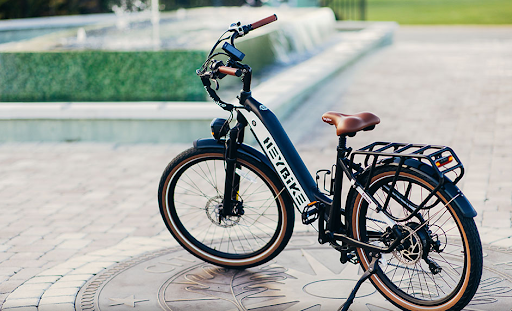In recent years, electric bicycles, or e-bikes, have surged in popularity worldwide. This rapid growth is fueled by a combination of technological advancements, environmental concerns, and the increasing demand for convenient urban transportation solutions. Traditional biking, while beneficial for health and fitness, often poses challenges such as physical strain and limited travel range. E-bikes address these issues by offering a blend of human and electric power, making cycling accessible to a broader audience.
In this article, we will delve into the evolution of e-bike technology, exploring its transformative journey from early prototypes to modern, high-tech machines that are reshaping the way we think about personal transportation.
The Birth of E-Bikes
The concept of electric bicycles is not as modern as one might think. The first patents for electric bicycles date back to the late 19th century. In 1895, Ogden Bolton Jr. secured a patent for a battery-powered bicycle. Around the same time, Hosea W. Libbey of Boston invented an electric bicycle powered by a double electric motor. These early designs, though innovative, were limited by the technology of their time, particularly the heavy and inefficient batteries.
The commercial availability of e-bikes began in the late 20th century. Early models were cumbersome and expensive, but they paved the way for the development of more practical and affordable options. As battery and motor technology improved, so did the viability of e-bikes as a means of transportation. Today, e-bikes are no longer a niche product but a mainstream option for commuters, recreational riders, and even delivery services.
Technological Advancements in Batteries
One of the most significant factors in the evolution of e-bikes has been the advancement in battery technology. The earliest e-bikes used lead-acid batteries, which were heavy, had a short range, and took a long time to charge. These limitations made them impractical for widespread use.
The introduction of lithium-ion batteries revolutionized the e-bike industry. Lithium-ion batteries are lighter and more efficient than lead-acid batteries. They store more energy in a smaller package, allowing for longer rides between charges and less weight to carry. Additionally, lithium-ion batteries have a longer lifespan and faster charging times, making them more convenient for daily use.
These advancements have made e-bikes more accessible and practical for a wider range of users. Riders can now travel longer distances without worrying about running out of power, and the lighter weight makes e-bikes easier to handle and more enjoyable to ride.
Motor Innovations Driving Efficiency
The evolution of e-bike motors has also played a crucial role in their development. Early e-bikes used brushed DC motors, which were simple and inexpensive but had several drawbacks, including limited efficiency and high maintenance requirements.
The transition to brushless DC motors marked a significant improvement. Brushless motors are more efficient, produce less heat, and require less maintenance than their brushed counterparts. They also provide smoother and quieter operation, enhancing the overall riding experience.
Today, there are two types of e-bike motors: mid-drive motors and hub motors. Hub motors are known for their ease of installation. Mid-drive motors, on the other hand, drive the crankshaft directly and are positioned near the bike’s bottom bracket. This allows for better weight distribution and improved performance, especially on hills and rough terrain. Both types of motors have their advantages, and the choice between them often depends on the rider’s specific needs and preferences.
Design and Material Evolution Improving Functionality
The design and materials used in e-bike construction have come a long way since the early days. Traditional bicycles were typically made of steel, which is strong but heavy. As e-bike technology has progressed, manufacturers have turned to lighter and stronger materials such as aluminum and carbon fiber.
Aluminum is a popular choice for e-bike frames because it is lightweight, durable, and relatively inexpensive. Carbon fiber, while more expensive, offers the best strength-to-weight ratio, making it ideal for high-performance e-bikes. These materials not only reduce the overall weight of the bike but also improve its handling and durability.
The aesthetic design of e-bikes has also evolved. Early models often looked bulky and unattractive, but modern e-bikes feature sleek, stylish designs that appeal to a broader audience. Hidden batteries, integrated components, and clean lines make today’s e-bikes look more like traditional bicycles, further enhancing their appeal.
Legislative Changes and Market Growth Promoting E-Bikes
The growing popularity of e-bikes has not gone unnoticed by legislators. In many countries, regulations have been updated to accommodate the unique nature of e-bikes. Initially, there was a lot of ambiguity about where e-bikes fit in the spectrum of motorized and non-motorized vehicles. Today, many regions have clear laws defining e-bikes, setting speed limits, and specifying the power of the motors allowed without requiring a license.
These regulatory changes have provided a more favorable environment for e-bike manufacturers and consumers. With clearer guidelines, manufacturers can innovate without the fear of legal hurdles, and consumers can ride with confidence knowing they are within legal bounds. This clarity has contributed to a significant increase in e-bike sales, making them a more mainstream choice for personal transportation.
Environmental Impact of E-Bikes
E-bikes are increasingly seen as a green alternative to traditional modes of transportation. As the world grapples with climate change and urban pollution, e-bikes offer a sustainable solution. They produce zero emissions during operation, unlike cars and motorcycles that contribute significantly to air pollution.
Moreover, e-bikes can reduce traffic congestion in cities, leading to lower overall emissions. The environmental benefits extend beyond just reducing pollution; they also promote a healthier lifestyle by encouraging people to cycle more, which can lead to reduced healthcare costs and a better quality of life.
E-bikes are also more energy-efficient compared to electric cars. The energy required to charge an e-bike is minimal, and with advancements in renewable energy sources, the carbon footprint of e-bikes continues to shrink.
Challenges and Limitations Facing E-Bike Adoption
Despite the many benefits, e-bikes are not without their challenges. One of the main issues is battery life and charging infrastructure. While battery technology has improved, range anxiety remains a concern for many potential users. The availability of charging stations is also limited in many areas, which can deter long-distance travel.
The cost of e-bikes can also be prohibitive. Although prices have come down over the years, high-quality e-bikes still represent a significant investment compared to traditional bicycles. This cost barrier can be a significant deterrent, especially in developing regions.
Additionally, there is a learning curve associated with e-bikes. Some users may find the additional weight and complexity of e-bikes daunting compared to regular bikes. This can be a barrier for older adults or those with limited cycling experience.
The evolution of e-bike technology has been a remarkable journey, transforming a novel concept into a practical and popular mode of transportation. From early prototypes with heavy lead-acid batteries to modern e-bikes with advanced lithium-ion batteries, powerful motors, and smart features, the advancements have been significant. Legislative changes have further supported their growth, making them more accessible and mainstream.
E-bikes offer numerous benefits, including environmental sustainability, reduced urban congestion, and improved personal health. However, challenges such as battery life, cost, and infrastructure still need to be addressed to fully realize their potential.
Keep an eye for more latest news & updates on Gossips!




